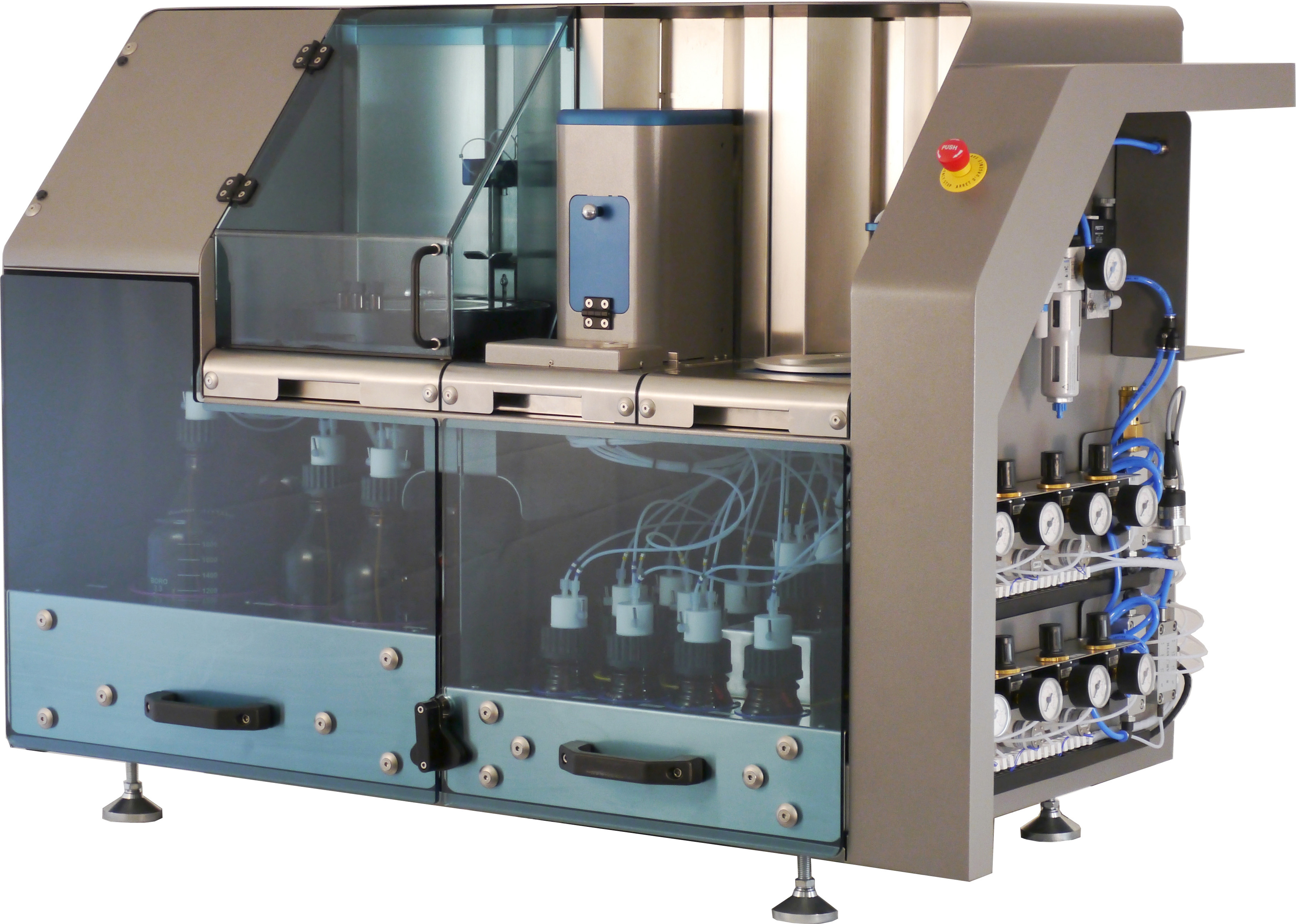Fighting pathogens with sugar molecules
Sugar can have many negative effects on the body. Overconsumption can give rise to obesity, high blood pressure and even diabetes. But there is more to sugar than meets the eye. For their next joint project, scientists from the Fraunhofer Institute for Cell Therapy and Immunology IZI and the Max Planck Institute of Colloids and Interfaces (MPIKG) have set their sights on polysaccharides. The two institutes will join forces to investigate how the arrangement of sugar molecules on DNA structures can be utilized to develop new antimicrobial agents. Planned to span a four-year period from May 2018, the "Glyco3Display" research project is being funded as part of the cooperation program between Fraunhofer and Max Planck.
Polysaccharides, also known as glycans, are long and complex sugar molecules made up of a chain of monosaccharides such as glucose or fructose. Starch, chitin and also cellulose are types of polysaccharides. Numerous glycans are also found on the surface of human cells. Disease-causing bacteria or viruses use these glycans to attach to somatic cells before then infiltrating them. The sugar molecules found on the membrane of human cells therefore play an important role for diseases, which makes them particularly interesting from a medical research perspective.
The automated synthesis of oligosaccharides was achieved for the first time ever in 2001 at the MPIKG, marking a revolutionary step in foundational research. Fraunhofer IZI, on the other hand, is able to draw on its qualified expertise in the field of DNA technologies. Researchers at the institute work, among other things, with DNA origami technology, a procedure whereby DNA is specifically programmed and folded to generate two- and three-dimensional structures in the nanometer range. In the joint project "Glyco3Display", the two fields of research will come together for the first time to strive after a common goal.
In order to do this, fundamental questions first have to be answered. "We are particularly interested in the conformation of polysaccharides in aqueous solutions, i.e. how molecular bonds and individual carbon atoms arrange themselves spatially. The three-dimensional structure of the molecules plays a pivotal role in the binding of pathogens to cells," explains Dr. David M. Smith, Project Manager and Head of the DNA Nanodevices Unit at Fraunhofer IZI. A huge advantage offered by automated sugar synthesis is the potential to be able to produce precisely defined molecules of a consistently high quality. The sugars can be precisely positioned using DNA origami technology, enabling their utilization in investigations and medical applications.
Possible applications present themselves in therapy and diagnostics. The project partners are looking to investigate whether the combined molecules attach themselves to receptors on the surface of disease-causing viruses and bacteria, which would lend them to diagnostic analysis. The scientists expect that the molecular and biochemical properties of the sugar molecules could lead to a much more precise, affordable and rapid detection of pathogens compared with antibody-based procedures.
The idea behind their therapeutic use is to oversaturate the disease-causing bacteria and viruses with respective sugar molecules and thus directly prevent the first stage of a disease, the binding to and thus penetration of human cells. Dr. Sebastian Ulbert, Head of the Department of Immunology at Fraunhofer IZI, comments: "Nasal sprays against viral pathogens based on sugar structures are already available on the market. However, the sugar structures used here have until now been acquired from algae in a complicated process. Harnessing the advantages offered by synthetic sugar would be a huge step forward."
With an eye to pathogens, the researchers are first focusing their attention on K-strains of the E. coli intestinal bacteria and influenza viruses. Moreover, sugar binding studies are to be conducted using the Dengue virus as part of the S3 safety laboratory work at Fraunhofer IZI. The virus triggers Dengue fever, a tropical disease transmitted by mosquitoes that has already been reported in Europe and the USA as a consequence of globalization.
"A key goal for the future is therefore to develop a high-throughput procedure to manufacture certain synthetic sugar molecules as well as to identify new DNA polysaccharide agents that can be used against pathogens," remarks Professor Peter H. Seeberger, Director of MPIKG and innovator behind the automated synthesis of oligosaccharides. The collaboration between MPIKG and Fraunhofer IZI opens up the possibility of transferring the envisaged foundational investigations into practical application as part of a research project.
Following "LegaScreen", a project that is developing the fundamental principles for an early warning test to diagnose dyslexia, "Glyco3Display" is the second project involving Fraunhofer IZI as part of the cooperation program between Fraunhofer and Max Planck.


